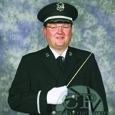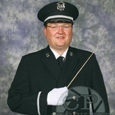When a program flourishes, word travels and everyone in the community wants to hear the amazing music that is being made. They also bring with them community support and financial backing. This makes concert programming one of the most important tasks conductors face. There are many variables to consider. The educational development of our students is the centerpiece for all that we play, but we also want to play music that our audience will enjoy. Finding the perfect mix for a concert can be difficult, especially when we find a wonderful new contemporary-sounding work and want to program it without losing a certain cross section of the audience. A friend and mentor, Kevin Richardson, Associate Director of Bands at Appalachian State University, taught me a simple formula that produces the perfect mix of music for any concert: something old, something new, something borrowed, something blue, and a march.
Something Old
Bands have been around much longer than most people realize. Groups of wind instruments were used in religious services in the 15th century by composers such as Gabrielli, and ensembles consisting of winds were also in use by the 18th century. However, it was bandleaders like John Philip Sousa and Patrick Gilmore, as well as composers like Gustav Holst and Ralph Vaughan Williams, who truly began to cement a place in history for the band. The music that these groups played is a very important part of the history of bands, and any concert would be enhanced by including something from this era. Some of these older staples of wind literature easily come to mind. Pieces like First Suite in Eb, Hammersmith, English Folk Song Suite, Flourish for Wind Band, Three Ayers from Gloucester, and Sea Songs are excellent choices. However, my definition of an old work is one for which the composer is no longer living. Gustav Holst, Claude T. Smith, Hugh Stuart, and Alfred Reed are a few of the names that immediately come to mind, and each have numerous works for each level of ensemble from middle school to collegiate.
Something New
This is an area where bands excel; it is possible for school bands to commission and perform many of the best and newest compositions. We embrace new music, almost to the extent that we could be considered a new music ensemble. When attending a band concert, most concertgoers expect to hear new works.
With the amount of new music that is being written for winds, this choice can be one of the hardest because of the amount of great music from which to choose. John Mackey, David Maslanka, Frank Ticheli, Julie Giroux, and many others are well-respected composers for band. Each of them also has works that are accessible by groups of all levels.
Something Borrowed
When the wind band came about, the primary source of repertoire was transcriptions of orchestral works. This formed the building blocks of the ensemble; the wonderful original works that we have today would not be possible if not for the transcriptions that allowed composers to hear how a band could sound. Although the largest amount of transcribed material is from standard orchestral literature, there is still a tremendous amount of music that has been arranged for winds from other mediums, including piano and choir. These works form the basis for this category.
Something Blue
When I am programming a concert and am looking for a blue piece, it is with the aim of balancing the concert. This can be a slow work, something written in a minor key or in a mode that is ominous, or even a jazz-based work. Mostly blue means something that easily fits with the other works but sounds different from everything else on the concert. Frank Ticheli’s Blue Shades is a good example of this. Many American composers will use some elements of jazz within their music. Good examples of other blue works outside the jazz idiom, are Hymn to a Blue Hour, Chant and Jubilo, An American Elegy, Give Us this Day, and Air for Band. These and many others will fill this spot on a concert program.
A March
Along with orchestral transcriptions, marches are the foundation of the literature for wind bands as we know them today. Most of us know John Philip Sousa, Henry Fillmore, and Karl King, but marches come from all places and from as far back as Mozart and Beethoven. Composers from the baroque, classical, romantic and 20th century eras all composed marches, and many times these were incorporated into symphonies and other larger works. In more recent times, marches have become a nationalistic form of composition. European marches by Kenneth Alford, Carl Teike, Josef Wagner, and Karl Michael Ziehrer can easily be found edited for modern band instrumentation. The French military also had a unique emphasis on percussion and brass. Marches such as Le Régiment de Sambre et Meuse and La Marche Lorraine are a couple of these. Many of these, as well as the marches of John Philip Sousa, can be found edited for more authentic performances. Wonderful versions for young bands are also available. This makes filling this section easy.
Finalizing Balance
Many pieces can fit one or more of these categories. Alfred Reed’s Greensleeves would easily fill both the old and blue categories. Sousa’s The Thunderer could be old and a march. A work such as March Slav by Tchaikovsky fits three categories: old, borrowed, and march. Knowing this is helpful when planning a concert with more than five pieces. For a visual reference of this, I list the works I have chosen and then in a second column, list the categories each work falls within.. Below is an example of a recent concert I performed with our University Band here at The Ohio State University. This ensemble is our non-major performing ensemble and is the level of a good high school band. Following this system will help you prevent from having a concert that is unbalanced toward any single category.
| Literature Programmed | Primary | Secondary | Tertiary |
| Procession of the Academics – Maslanka |
New |
||
| Three Ayres from Gloucester – Stuart | Old |
Blue |
|
| Chorale and Allegro – Nelhybel/arr. Richardson |
Blue |
Old |
New |
| Simple Gifts: Four Shaker Songs – Ticheli |
New |
Borrowed | Blue |
| The Vanished Army – Alford |
March |
Old |
|
| American Cival War Fantasy – Bilik | Borrowed | Old |
Each area is covered in the primary categories. If the works fit in a secondary or tertiary category, this is notated so I can see the balance of the concert.
Here is another example from a program that was performed by the Forbush High School Band (Matthew Brusseau, director), located in East Bend, North Carolina.
| Literature Programmed | Primary | Secondary | Tertiary |
| Flourish for Wind Band – Vaughan Williams | Old | ||
| With Quiet Courage – Daehn | New | Blue | |
| Ukranian Bell Carol – Traditional | Borrowed | Old | |
| Greensleeves – Reed | Blue | Borrowed | |
| A Christmas Festival – Anderson | March | Borrowed |
Old |
Even a holiday concert can be put together using this method. Looking at the literature, each category is covered. A Christmas Festival covers numerous categories, but here it primarily satisfies the desire to have a march – or have march-like material within a work.
The theme of the following concert was “Borrowed and Blurred,” and it is a great example to show diversity in programming by using literature that comes from old material, but is used in various ways to make it either new, old, borrowed, blue or a march.
| Literature Programmed | Primary | Secondary | Tertiary |
| Pastime with Good Company – Henry VIII/arr. Sparke |
Old |
New | |
| Fantasies on a Theme by Haydn – Dello Joio | Blue |
Old | |
| The Beethoven Machine – Colgrass | New | Old | |
| March Slave – Tchaikovsky/trans. Daehn | March | Old | |
| Ye Banks and Braes O’Bonnie Doon – Grainger |
Borrowed | Old | |
| Of Fire and Ice – Harbinson/trans. Harbinson | New | Borrowed |
All the works except one fit within the old description, as they are all created from previously existing material. Even the new work, Of Fire and Ice, was originally composed for orchestra and transcribed for winds by the composer, thus making it both new and borrowed.
As we strive to give our students a well-rounded musical education, it is important to create concerts that will teach them the various styles, history, and musical literature that are available to musicians throughout the world. Using this method of choosing music will create an interesting and educational environment that will draw support for your program and enrich the culture in your community at the same time.






